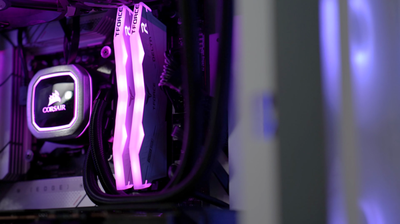
Trying out TEAMGROUP's T-Force Delta RGB DDR5 32GB RAM (2024)
My experience with the TEAMGROUP T-Force Delta DDR5 RAM: performance, style, overclocking potential, and market value.
Introduction
I've been testing out the TEAMGROUP T-Force Delta RGB DDR5 RAM in the latest Intel systems and wanted to share my findings, especially for those considering an upgrade. I'll cover the performance, looks, overclocking, and overall value of this memory kit. Memory choice is critical for a new PC build and DDR5 is the latest advancement to consider, but jumping into new technology often comes with its own set of challenges.
Some photos (click to enlarge)
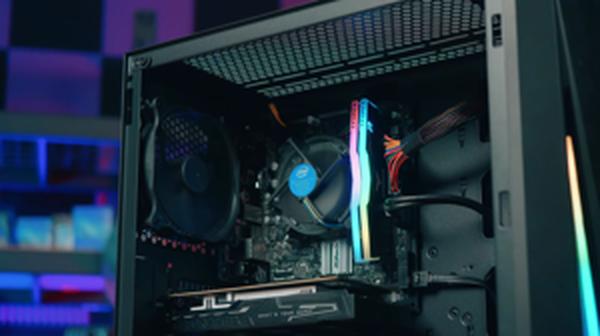
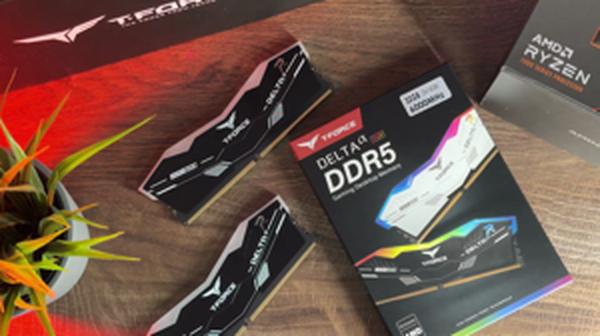
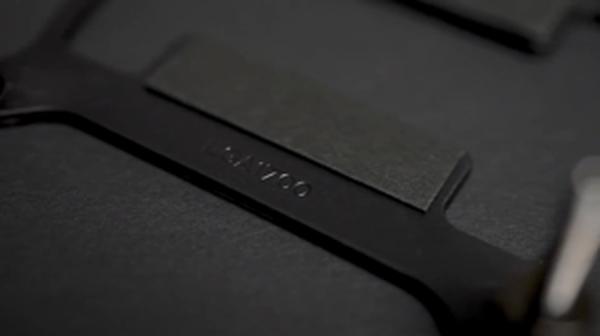
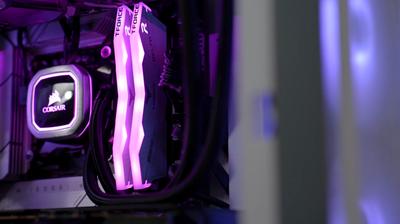
Specs of the TEAMGROUP T-Force Delta RGB DDR5 32GB White
- Release Year
- Brand
- Compatible Devices
- Computer Memory Size
- Memory Speed
- Ram Memory Technology
Prices
Performance and Compatibility with the Latest Intel Platforms
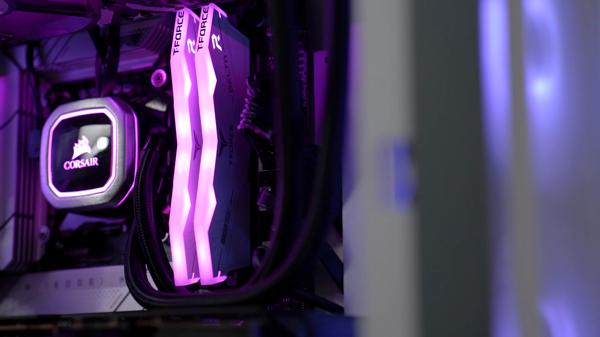
When building a PC with the latest Intel chipsets, it's crucial to select RAM that can maximize performance while maintaining stability. With the introduction of DDR5 memory, we're looking at a huge leap in potential speed and bandwidth, but it's not without its teething problems.
Here's a quick rundown of my findings:
DDR5's Speed: Impressive improvements, especially with systems built around Intel's 12th and 13th Gen processors.
Heat Management: DDR5 runs cooler thanks to lower operating voltages, a significant step up from DDR4.
High-Quality ICs: Reliable performance is a must, and high-quality ICs are a cornerstone of trustworthy RAM.
However, real-world applications can bring some challenges to light. I've personally experienced how using four DIMM slots with DDR5 RAM can lead to complications like blue screens when XMP profiles are engaged. It was only after reverting to the default speed that my system stabilized. This indicates potential compatibility hurdles that need to be addressed with future BIOS updates or by choosing RAM known to play well with your particular motherboard.
Although Intel's 12th Gen processors officially support speeds up to 4800MHz, pushing for higher frequencies can sometimes lead to instability, especially when all four DIMM slots are occupied. It's a careful balance between achieving top-tier performance and maintaining system reliability. After a BIOS update intended to rectify these issues, I still had to settle for running my RAM at 5200 MHz, which is acceptable but not ideal given the capabilities of the hardware.
With that said, I've found that when the RAM does operate at full tilt, without pushing into the overclocking territory, the speed is phenomenal relative to the cost, particularly since DDR5 is still a relatively new technology. I've had sticks from TEAMGROUP running smoothly for over a year, affirming their commitment to quality, though it's crucial to be aware of potential early adopter issues.
In terms of practical advice, I'd recommend considering two sticks of the capacity you want right from the start, rather than planning for a future upgrade—mixing and matching sticks later on can be a real headache. The TEAMGROUP T-Force Delta RGB DDR5, specifically, has run without a hitch, barring the multi-stick hiccup, making it a solid choice for those seeking stable performance on Intel platforms. Just keep in mind that the full potential of DDR5 might not be unleashed until compatibility issues are fully ironed out across all motherboard and CPU combinations.
Aesthetic Appeal and RGB Customization Issues

I've spent a good deal of time reflecting on the aesthetic appeal of the TEAMGROUP T-Force Delta RGB DDR5, and while the overall design is sleek, there have been some challenges with the RGB customization that are worth mentioning. Here are my key observations:
Sleek, Modern Design: Straight off the bat, these memory sticks look fantastic. They've got a modern vibe that really complements any high-end gaming setup. The RGB lighting is bright and vibrant, which adds that extra flair to the system.
Smooth RGB Integration: When it comes to syncing the RGB lights with the rest of my gaming rig, it can be a hit or miss. In my case, I couldn't get MSI's software to control the RGB, leaving it somewhat out of sync with the rest of my setup. Not a dealbreaker, but definitely something to be aware of.
Standalone Aesthetic: For those who aren't too keen on perfect sync, the RGB on these sticks still holds its own. The default lighting effects are eye-catching, enough to leave as is without any custom tweaks.
Potential RGB Software Fixes: Now, while I haven't seen an easy solution yet, I hold out hope that future software updates might address this lack of interoperability.
RGB as a Nice-to-Have: Ultimately, I see RGB as a cool extra rather than a core feature. While I value aesthetics highly, performance is king. So, if the RGB isn't up to scratch, it's something I can overlook if the rest of the performance metrics are on point.
Now, let's break it down a bit further:
Pros:
Attractive design that elevates the look of my gaming rig
RGB lighting is well implemented and adds significant visual appeal
Cons:
Customization software compatibility isn't guaranteed
The RGB may not sync with other components' lighting systems
To wrap up, my time with the TEAMGROUP T-Force Delta RGB DDR5 has been generally positive from an aesthetic standpoint. It's a shame about the hiccups with the RGB control, though. Based on what I've seen on forums, I'm not the only one wishing for a bit more flexibility there. But hey, if you're upgrading your PC and need something that not only performs well but also looks the part, this RAM certainly fits the bill. Just be prepared to either dig around for workarounds or accept the RGB lighting as-is.
Overclocking Potential and Stability Concerns

When exploring the overclocking potential of the TEAMGROUP T-Force Delta RGB DDR5, I've got to admit that the experience has been somewhat of a rollercoaster ride. Overclocking memory has its inherent risks and rewards, but it also brings an undoubted excitement to tech enthusiasts like me. Here's a quick rundown:
Pros:
Impressive overclocking headroom, especially with a reliable Z790 motherboard and a stable power supply.
The memory seems to retain stability at high frequencies, with some working flawlessly at 7800MHz.
TEAMGROUP's use of Hynix A-die chips seems to pay off with better overclocking potential compared to some other dies.
Cons:
Potential stability issues when filling all DIMM slots, particularly noted with certain Intel 12th and 13th Gen processors.
Risks of overheating or worse, damaging components if proper voltages and cooling solutions are not in place.
Default speeds and XMP profiles might not work out of the box, requiring manual tweaking, which can be daunting for less experienced users.
I can't help but appreciate the potential speed gains, certainly tipping on the positive side when it comes to performance. However, it's crucial to mention that enabling XMP with four sticks did lead to blue screens for me, echoing online anecdotes from other users. After a BIOS update (which can sometimes be akin to performing digital acrobatics), I managed to achieve stable 5200 MHz speeds, which, while not ideal, still beat Intel's 12th Gen default speeds.
It's also worth noting that lower voltages equate to less heat, which makes the DDR5 a cooler option, something the tech in me can't help but geek out about. The reduced thermal footprint is a definite plus for system stability, not to mention longevity for the components themselves.
Despite initial excitement, I did have to temper my expectations with practicality. While pushing boundaries is appealing, I'm aware of the delicate balance between achieving optimal performance and maintaining system stability. Managing timings and voltages is a nuanced skill, one that makes me recommend caution to anyone stepping into this realm.
The A-die chips on these sticks are also quite heat-sensitive; too much tweaking can lead to instability or, worst-case, fried sticks. It's a reminder that when it comes to overclocking, there's no free lunch – proper cooling and settings are non-negotiable.
In my opinion, the TEAMGROUP T-Force Delta RGB DDR5 does offer a solid overclocking platform – a tempting proposition for the brave-hearted enthusiast. For those willing to take the ride, the rewards can be tangible, but it's a path best walked with care and, ideally, sufficient technical know-how.
Value and Comparison to Other Brands in the Market

In the world of gaming memory, the TEAMGROUP T-Force Delta RGB DDR5 stands out for a few key reasons. Having used various RAM brands over the years, I've come to appreciate the delicate balance between performance, aesthetics, and of course, price. Here's my take on how the T-Force Delta matches up:
Value: When it comes to pricing, TEAMGROUP often undercuts the heavyweights without compromising on performance. Finding DDR5 at this price point, especially with RGB, is a strong selling point. They're not the cheapest on the block, but they aren't up there with the jaw-dropping tags you'll see on some competitor modules either.
Quality & Design: The 'muscularity' in the design isn't just talk. The build quality feels solid, and they look like they mean business. The RGB is a matter of taste, but it has a bright, consistent glow – no hotspots to date.
Performance: I've pushed these sticks on various tasks from gaming to running a server, and they've held up without a hitch. Sure, enabling XMP with four DIMMs was a bit of a rollercoaster initially, but updates seem to iron out these kinks over time.
However, it's not all rainbows – no product is perfect. The early-phase DDR5 teething problems are real. If you're looking to max out your DIMMs, research your motherboard compatibility closely, as the quad-slot curse may hit you too. Also, for those into the nuances of LED control, the inability to sync the RGB with certain software might be a minor gripe.
Teamgroup's RAM has served me well, offering a well-liked grid of features versus cost. Using other big names in the past, I can firmly say that TEAMGROUP's offerings are competitive. They focus on what gamers and builders are looking for: performance and reliability without needing a second mortgage.
To finish off, let's zoom out and reflect on the broader picture for a sec. Here's a quick summary:
Pros:
Price-to-performance ratio is hard to beat, especially for DDR5.
Sleek and sturdy design, with impressive RGB implementation.
Reliable performance, delivering as advertised.
Cons:
Potential compatibility issues when fully populating DIMM slots.
RGB software control can be hit or miss depending on the motherboard.
For me, it's going to be TEAMGROUP for the foreseeable future. They've managed to deliver a product that feels tailored to the gamer's wants while keeping a lid on price. Sure, they're not without faults – but then again, what is? As new BIOS updates roll out, I've got high hopes that any wrinkles will smooth over. Plus, running cooler than DDR4 at lower voltages is a bonus I didn't expect I'd appreciate as much as I do. In the RGB-lit, speed-hungry, memory-munching world of gaming, these sticks hold their own.
Comments (0)
Share